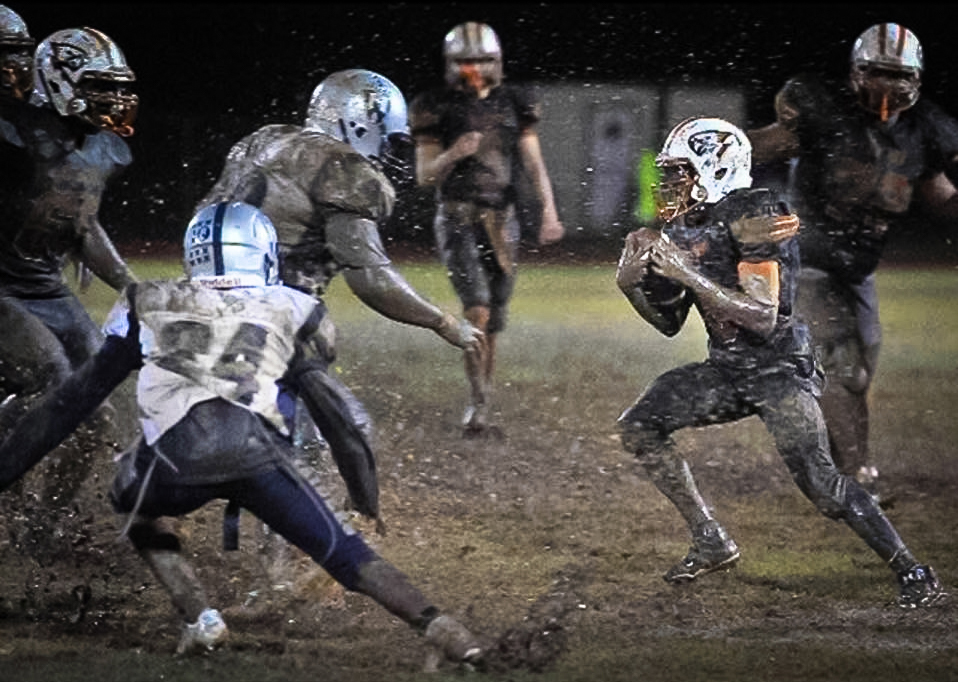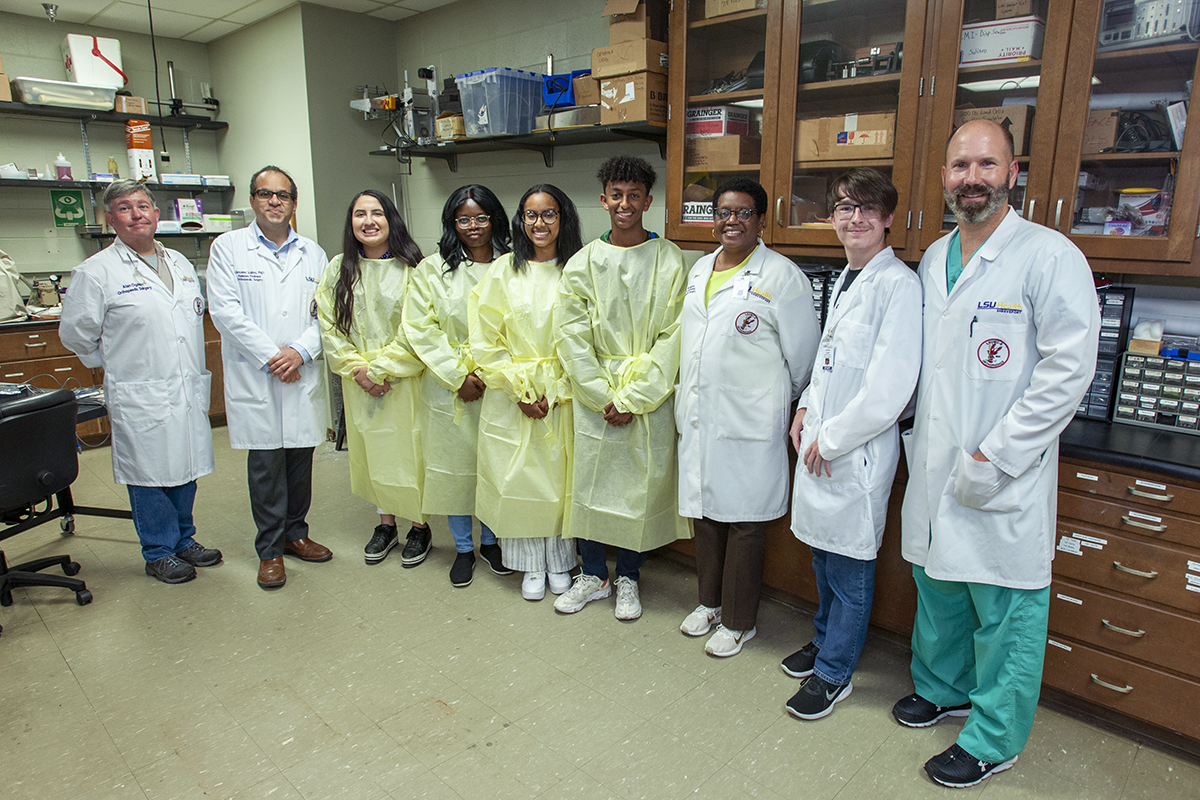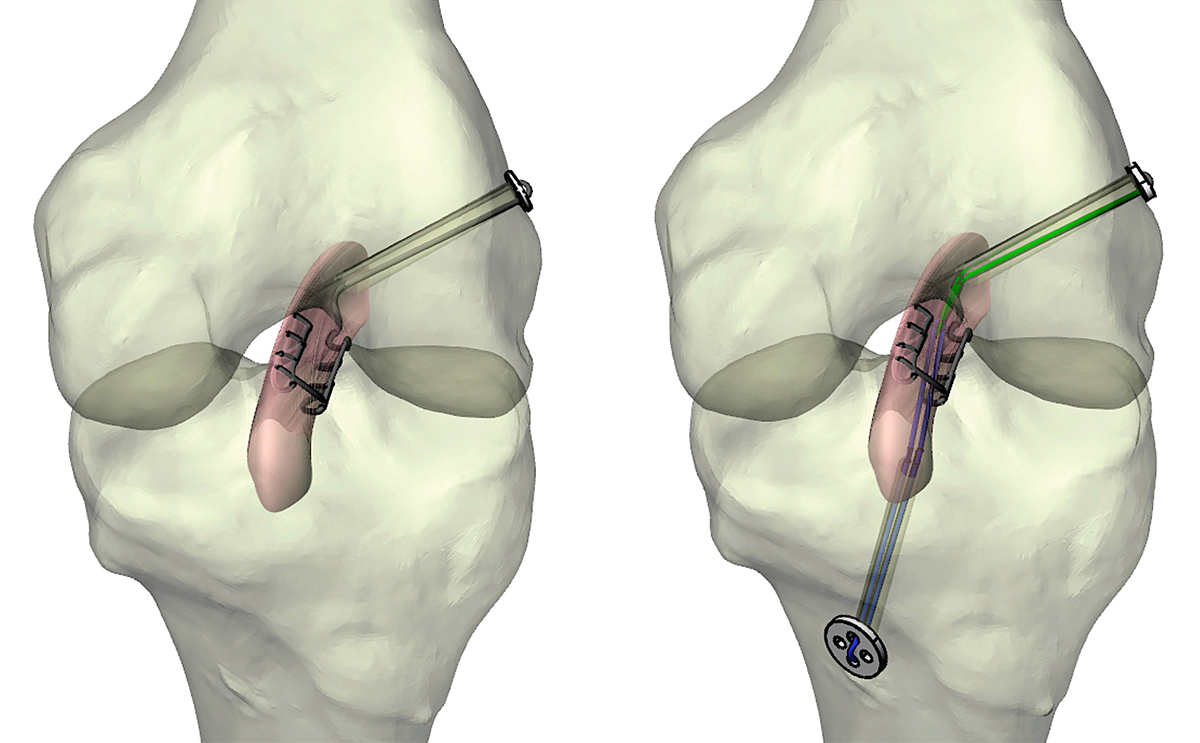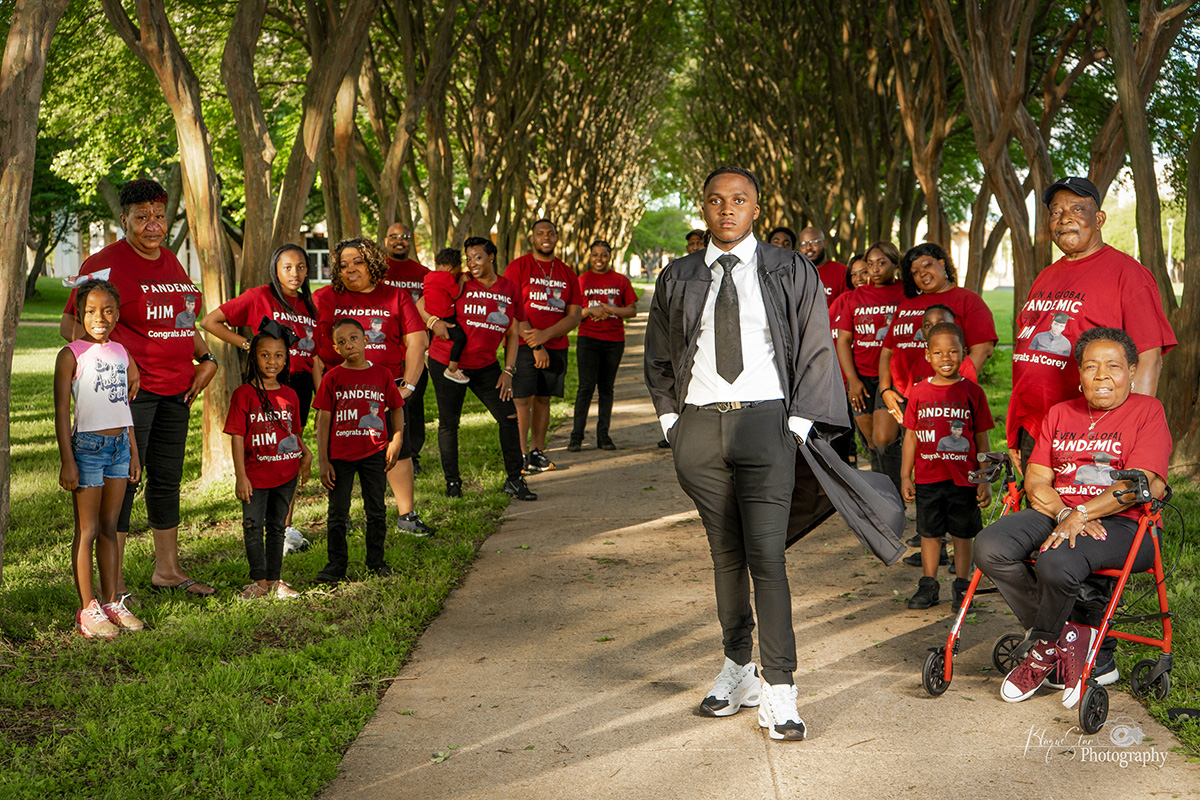Caring in the Extreme: A New Chapter in Personalized Orthopedic Care for Non-Textbook Patients in Northwest Louisiana
April 06, 2022

Ja’Corey Thomas, pictured here in jersey #24 playing for the McMurry University War Hawks, suffered complete ACL tears in both of his knees that almost derailed his academic and athletic career. He received surgery at Ochsner LSU Health Shreveport based on research done in the LSU Health Shreveport Biomechanics Lab, resulting in a new surgical method that can withstand twice as much force as traditional ACL repairs. Thomas was able to return to sport within a few months and graduated with a bachelor’s degree in kinesiology last year.
– Photo courtesy of Ja’Corey Thomas
Improved care through biomechanical research.
Baton Rouge—Because of the diversity in patients they see, from elite athletes in sports medicine to obese patients in trauma care, LSU Health Shreveport orthopedic surgeons are collaborating with mechanical engineers in a dedicated Biomechanics Lab to challenge ideas in the current medical literature, find new solutions, and improve care for all patients.
Giovanni Solitro holds two Ph.D. degrees in mechanical engineering, one from the University of Salerno in Italy, and one from the University of Illinois. He initially set out to design race cars and developed computer models for crash testing—several of his own former students are now working for car manufacturers, such as Ferrari. Solitro, however, realized he was more interested in helping patients recover from bone and joint injuries than in designing safer cars. He joined LSU Health Shreveport for the challenge; improving care for patients who suffer from health disparities and rarely present as “textbook cases.” As director of its Biomechanics Lab, Solitro is still using the same kind of software and tools as colleagues in the car industry, but with a different goal—to help orthopedic surgeons solve problems.
“This is the best place to do the work I do, because we’re an academic hospital, a teaching hospital, and we face very challenging conditions for surgery here in Shreveport,” Solitro said. “We have a high prevalence of obesity in our community, and the people we treat do not look like classic patients in medical textbooks. If we do a repair on someone’s knee, that repair has to be stronger; more weight means more stress, larger forces, and bigger volumes, and our orthopedic surgeons have to be like Formula 1 drivers.”
“The people we treat do not look like classic patients in medical textbooks. If we do a repair on someone’s knee, that repair has to be stronger; more weight means more stress, larger forces, and bigger volumes, and our orthopedic surgeons have to be like Formula 1 drivers.”
Giovanni Solitro, director of the LSU Health Shreveport Biomechanics Lab
The Biomechanics Lab puts medical theories to the test. It also validates—through research—surgeons’ personal experience and “feelings” about best practices, comparing different techniques side-by-side. The results sometimes confirm a surgeon’s expectations, sometimes the opposite. “I don’t have any friends,” Solitro jokes, among the surgeons who are clearly also his friends. They have an explicit agreement to keep ego out of the lab and let the research results speak for themselves. Once published in medical journals, their findings also benefit others. The Department of Orthopaedic Surgery at LSU Health Shreveport is regularly publishing research on implants and surgical techniques to get people back to work and athletes back to sport sooner.

Research in the LSU Health Shreveport Biomechanics Lab regularly involves students. From left to right: Alan Ogden (research associate), Giovanni Solitro, Jacquelin Sandoval, Bushirat Abubakar, Laureng Hall, Shelia Rogers (research technologist), Jordan Lowe, and Dr. R. Shane Barton.
– LSU Health Shreveport
Besides running the Biomechanics Lab, Solitro is helping to train medical students and the next generation of surgeons by developing new educational tools, such as virtual simulators. He recently created a video game to help them practice how to perform sacroiliac joint fusion, which is difficult and involves a long learning curve, especially with obese patients.
“The landmarks aren’t the same as on a thinner patient—and if you don’t know, you’re guessing,” said Dr. Brad Chauvin, chief of orthopedic trauma surgery at LSU Health Shreveport. “Because I’ve done enough of these surgeries, a video game isn’t going to help me do them faster or better, but it certainly helps our residents.”
Part of Solitro’s and his team’s goal is to use simulations and virtual reality to help less experienced surgeons.
“Having been a resident myself not long ago, I can say a learning tool like this would have helped me immensely in my training,” orthopedic trauma surgeon Dr. Kevin Perry said. “I think it will make a drastic difference in the education of our residents, both here and across the country. The research we do in our Biomechanics Lab guides our decision-making relative to our patients, and every study can have an immediate impact on patient care.”
“The research we do in our Biomechanics Lab guides our decision-making relative to our patients, and every study can have an immediate impact on patient care.”
Dr. Kevin Perry, orthopedic trauma surgeon at LSU Health Shreveport
“What I really love about this work is that it allows us to be protagonists,” Solitro added. “We can bring more innovation to the patient.”
Together with Dr. Patrick Massey, sports medicine surgeon and director of clinical research, Solitro recently helped come up with a new method for meniscus repair that now is being adopted by orthopedic surgeons world-wide. Menisci are shock absorbers in the knee and tears are common among athletes. Their new method, placing stiches like rebar instead of in a bridge or cross shape, is about 50% stronger than traditional methods. To test this and other techniques, Solitro’s team does mechanical experiments in his lab using cadaver bone, tendons, and ligaments. They use machines to test surgical repairs by applying force until the point of failure.

Dr. Patrick Massey, Giovanni Solitro, and their team published research on improved ACL repair techniques in the July 2020 issue of Clinical Biomechanics in a paper titled “Biomechanical comparison of anterior cruciate ligament repair with internal brace augmentation versus anterior cruciate ligament repair without augmentation.” The illustration shows the traditional repair technique on the left and the team’s improved approach on the right. The latter can withstand more than twice as much force before breaking.
– Published with permission CC BY-NC-ND 4.0
“Many of the established solutions in orthopedic care were designed for standard patients of normal weight and size, while we deal with extremes,” Dr. Massey said. “Our patients really push the limits, and this raises the bar for the care we provide.”
Besides for the meniscus in the knee, the Biomechanics Lab has developed new solutions for pelvic fixation (the length, size, angle, and position of the screws) and ACL repair to get patients back to normal life and sports faster.
“Dr. Massey got me mentally prepared for what could happen, but after the surgery and with physical therapy, I was able to get back on the field after just a few months. I was able to get a scholarship and play as a cornerback, and then as a wide receiver.”
Ja’Corey Thomas
Dr. Massey recently treated a young man, a student and football player from Shreveport named Ja’Corey Thomas, for two complete ACL tears that almost derailed his academic and athletic career. After a very promising junior year at Huntington High School as a cornerback and safety, Thomas was being recruited to play college football. Then he tore his right ACL.
“Dr. Massey got me mentally prepared for what could happen, but after the surgery and with physical therapy, I was able to get back on the field after just a few months,” Thomas said. “I was able to get a scholarship and play as a cornerback, and then as a wide receiver.”
Two days before his first college game, Thomas tore his other ACL. Instead of being treated in Texas, where he was, Thomas got in the car and drove back to Shreveport to see Dr. Massey.
“Besides doing the surgery, Dr. Massey also educated me,” Thomas said. “I now know more about ACLs than I ever thought I’d know.”
Thomas had his second ACL surgery at Ochsner LSU Health Shreveport and returned to studying and playing football. He graduated with a bachelor’s degree in kinesiology last year and plans on working as a coach in the Shreveport area.

Ja’Corey Thomas graduated with a bachelor’s degree in kinesiology from McMurry University last year. “I now know more about ACLs than I ever thought I’d know,” Thomas, who suffered complete ACL tears in both his left and right knee, but was able to return to scholarship and sport after being treated with “extreme care” at Ochsner LSU Health Shreveport, based on research in the LSU Health Shreveport Biomechanics Lab.
– Photo couresy of Ja’Corey Thomas
“It’s great to be able to help young athletes like Ja’Corey,” Dr. Massey said. “Through the research we’ve done in our Biomechanics Lab, we’ve been able to test new technologies and publish results showing that ACL repairs are much stronger when augmented with a suture tape.”
Because of LSU Health Shreveport’s proximity to Barksdale Air Force Base, the orthopedic team also treats soldiers and veterans on a daily basis. Knee, lower limb, and pelvic injuries are not uncommon in the military.
“No matter whom we’re taking care of, they’re getting this cutting-edge technology, and as a doctor, that’s just one of the coolest things.”
Dr. Patrick Massey, sports medicine surgeon and director of clinical research at LSU Health Shreveport
“We’re become like the unofficial team doctor for the military here,” Dr. Massey said. “No matter whom we’re taking care of, they’re getting this cutting-edge technology, and as a doctor, that’s just one of the coolest things.”
“Our goal is success in 100% of all cases,” Solitro added. “Before we started the Biomechanics Lab, the ‘best approach’ was often an opinion—there was no evidence. Now we can explain why a particular approach is better and target things other places do not, because they don’t have the same patient population. Research helps our patients have confidence. It gets us past ‘trust me.’
This news story was featured in LSU’s free research publication, Working for Louisiana, where you can learn more about how work on every LSU campus impacts residents and industry in the state and beyond.